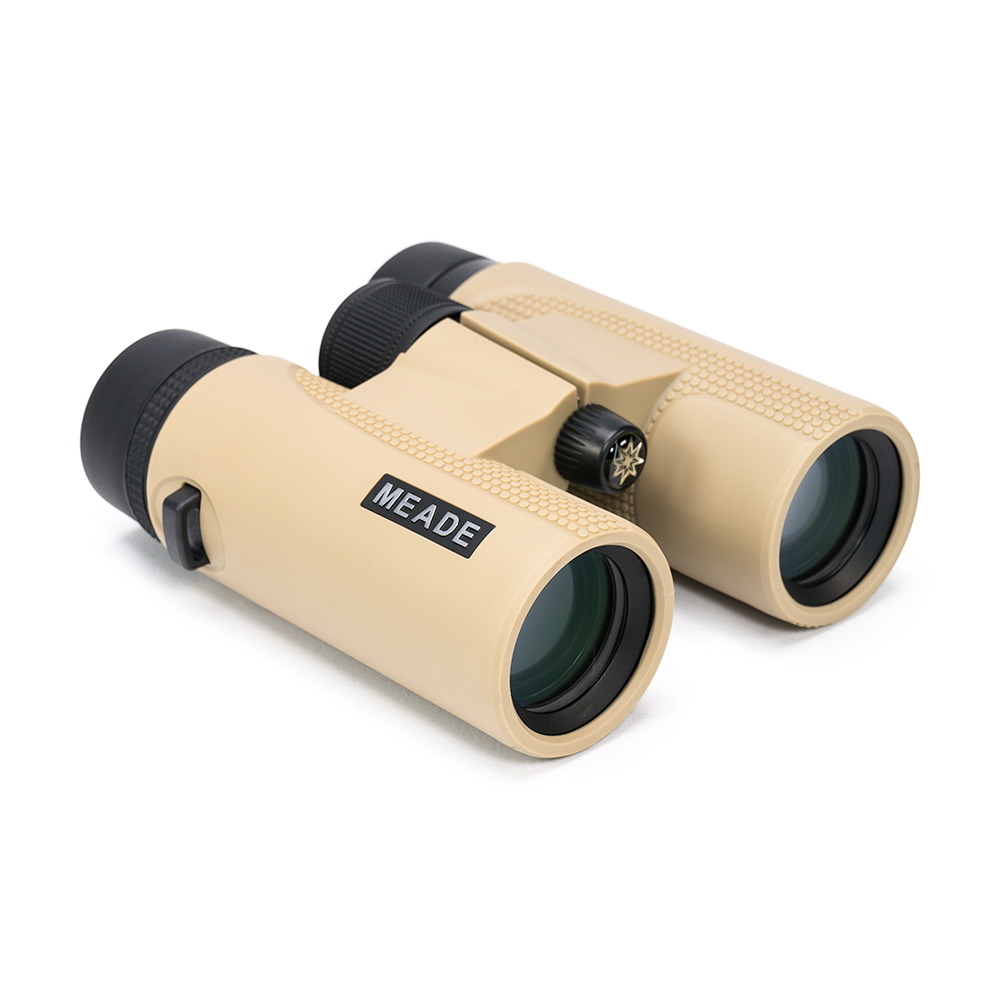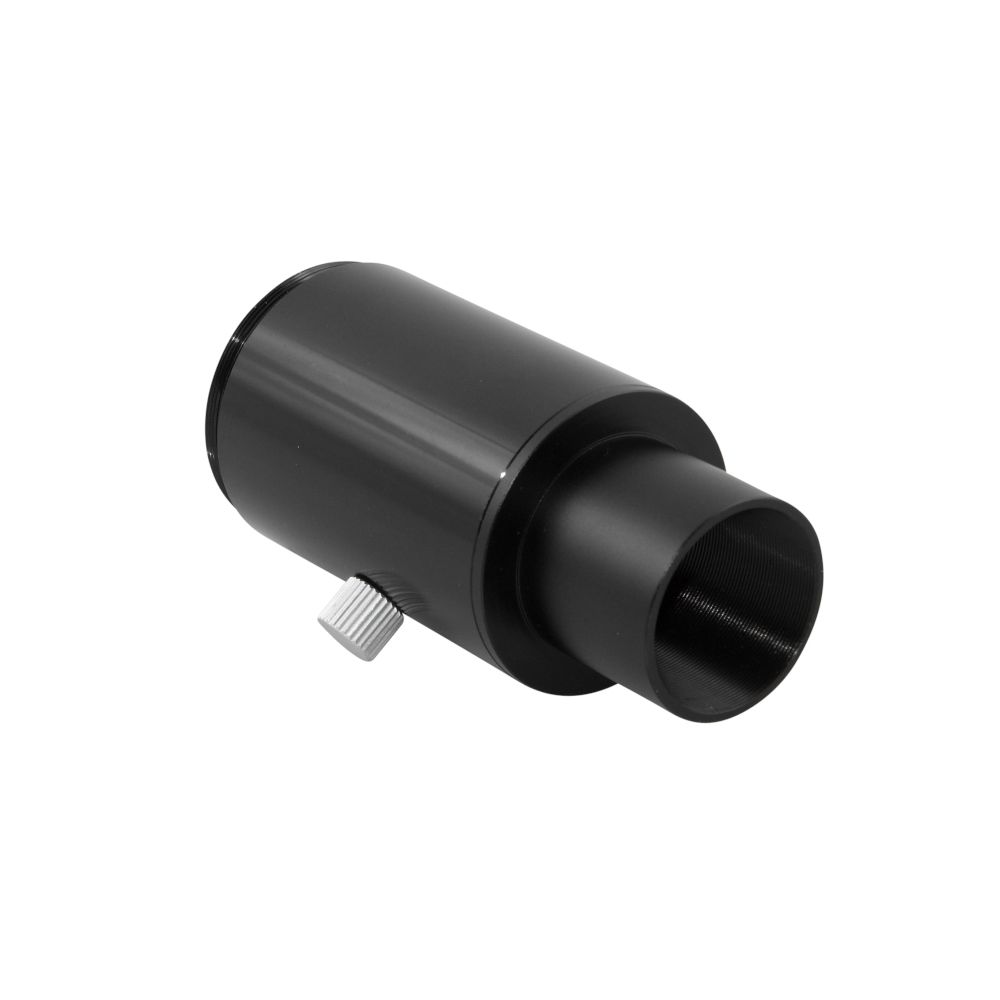
Meade’s diagonals- particularly their high-reflectivity Series 5000 2" dielectric mirror diagonals- are known for their ability to preserve image brightness and contrast with 99% reflectivity across the visible spectrum. When used with properly collimated optics, these diagonals ensure that every photon is optimally directed to your eye or sensor. Meade diagonals maximize optical throughput, and when paired with collimation knobs, they create a system where the telescope performs at its optical peak. It delivers more reliable astrophotographic results. It's this synergy between precision alignment and premium accessories that sets a well-built Meade setup apart. This is where collimation knobs, such as Apertura collimation knobs come into play.
Highlighted Products
Featured Product 1
High-magnification imaging, especially of deep-sky objects, planets, and the Moon, demands the Meade SCT Variable Projection Tele-Extender, a must-have instrument in astronomy. Allowing a Schmidt-Cassegrain Telescope (SCT) to project an image from the eyepiece onto a camera sensor at several focal lengths lets it provide a scale-adjustable image without sacrificing optical quality. Users can modify the magnification based on the item or viewing conditions using the adapter's ocular projection and prime focus capabilities. It has a straight SCT thread link reducing vibration and image displacement in line with 1.25-inch eyepieces.
Featured Product 2
When working with monochrome cameras, the Meade LRGB Imaging Filter Set 1.25 is essential for advanced color astronomy. Trichromatic photography relies on the Color, Luminance, Red, and Green filters. Each filter digitally combines the light from the other two filters to produce a high-quality composite color. These parfocal filters provide separate exposure control, making images more balanced and visually pleasing.
Featured Product 3
A stable setup for every astronomical journey needs this straight-through Meade 8x50 Viewfinder. Finding and centering things is shown simply by utilizing a broad 4.7° field of vision and a crosshair reticle. Merely turn the objective lens to focus this viewfinder. Adjoining flawlessly to your Schmidt-Cassegrain and ACF OTAs, the extra-wide universal dovetail base has slotted mounting holes for compatibility with a broad spectrum of apertures. Two #8-32 x 1/2" mounting screws supplied in this box will help you to fasten the base to your telescope. Your viewfinder is held in place by six metal thumb screws on the aluminium finder bracket. These nylon-tipped thumb screws guard the elegant blue finish of your 8x50 viewfinder.
Featured Product 4
Connecting a camera to Meade LX Series telescopes, including LS, LX90, and LX200 models. The Meade #62 T-adaptor is a prime-focus astrophotography adaptor. Its typical T-thread output and compatibility with different imaging equipment help to transform an OTA into a strong astrophotography imager. DSLR cameras need a user-supplied T-Ring; Meade ED APO refractors need a Universal Thread Adapter.
Featured Product 5
A tiny, sturdy tool meant to double the magnification of any 1.25" eyepiece is the Meade Short-Focus Barlow Lens. Its advanced multi-coated lenses improve picture quality and lower light loss. Perfect for astrophotography and stargazing, the 26 mm lens aperture gathers sufficient light. At three ounces, it remains consistent over time.
More About This Category
Your Meade telescope can trace its history all the way back to a 1972 issue of Sky and Telescope magazine. The company continually produces exceptional telescopes, such as their ETX 90, allowing amateur astronomers of all skill levels to see the sky like never before. A diagonal is an excellent accessory to help you look through your eyepiece when the telescope is trained straight up and getting lined up with that eyepiece is, otherwise, a feat.
Diagonals, also called star diagonals, let you view objects at a 90-degree angle, a huge advantage when the best targets lie overhead. The Meade 2” Diagonal with SCT Adapter, in particular, is a quality choice, with optics made from thermally-stable genuine Pyrex glass and an adapter that accommodates two different barrel eyepiece sizes.If you have any questions as to which Meade diagonal or diagonal accessory is right for you, our non-commissioned product advisors are happy to help!
Accessories like diagonals and filters maximize the potential of your optics. A Meade diagonal improves ergonomics and can be a hidden source of optical improvement. Proactively choosing high-quality accessories early on can eliminate bottlenecks in optical quality and allow a telescope to perform at its best.
The important function of Meade diagonals and accessories is to improve the visual performance, comfort, and adaptability of telescopic viewing. To make viewing objects high in the sky more comfortable, a diagonal diverts incoming light, usually by 90°, in refractors and catadioptric telescopes (such as Schmidt-Cassegrain and Maksutov). Mirror diagonals (often 1.25 or 2 inches), prism diagonals, and coatings that increase dielectric all have their advantages, and Meade offers them all. Planetary and lunar detail, for instance, benefit greatly from their 99% dielectric mirror diagonals' high reflectivity and endurance, which are important for tasks requiring brightness and contrast.

If your SCT is capable of full optical potential, why limit it with a 1.25-inch bottleneck? For Schmidt-Cassegrain telescopes, the Meade SC Thread to 2" Accessory Adapter is an aluminum part that lets you use 2" accessories. For a safe connection that sidesteps problems with 1.25-inch visual backs, thread it straight onto the telescope's rear cell. To make sure it works with regular Meade and Celestron SCTs, the adapter has SCT male threads and a female 2" slip-fit hole. It has internal anti-reflective baffling to improve contrast and support large equipment. This adapter is a must-have for anyone going to a 2" diagonal or setting up a wide-field lens.

Owning an f/10 SCT, the 20 mm eyepiece with a 100x balanced magnification is perfect for studying planetary features, star clusters, and the Moon. What makes it such a great all-around eyepiece for astronomers? The Meade Series 4000 20 mm Super Plössl Eyepiece (1.25") excels in various telescopic applications with its medium power and broad field capabilities. Lightweight, with a 13 mm eye relief, multi-coated optics, and a traditional 4-element symmetrical Plössl design, these spectacles are sure to please.

For prime focus astronomy with a DSLR or mirrorless camera on telescopes with a 1.25 focuser or diagonal, the Meade Basic Camera Adapter - 1.25" is the way to go. This prime focus imaging equipment allows for high-magnification, narrow-field objects by connecting to a telescope's 1.25 focuser and camera via a T-ring. Ideal for use with most conventional 1.25-inch eyepieces, it is lightweight, portable, and compatible. However, a T-ring is needed for eyepiece projection, back-focus adjustment, and compatibility with different camera brands.
Always use lens caps and soft cloths to maintain Meade accessories at peak performance to prevent dust accumulation and scratching. Clean optics only when necessary, with proper tools like blower bulbs, optical wipes, and lens-safe cleaning solution. Keep diagonals and filters dry and stored in padded cases, especially dielectric models, which are highly resistant to oxidation but not immune to mechanical damage. If you're expanding or refining your setup, upgrading your diagonal is often smarter than buying another eyepiece.
Meade accessories also include adapters, SCT visual backs, and extension tubes, which allow users to fine-tune the optical train length. This factor interacts directly with collimation and focus precision. A well-collimated telescope combined with Meade's diagonals means that the field of view is centered correctly and crisp and that high-magnification views (like those of Saturn's rings or lunar rilles) remain sharp across the entire field.
Maintenance is straightforward, keep diagonals and collimation knobs dust-free and never overtighten the knobs. A regular laser or star test is recommended to ensure collimation hasn't shifted, especially after transporting your telescope.




